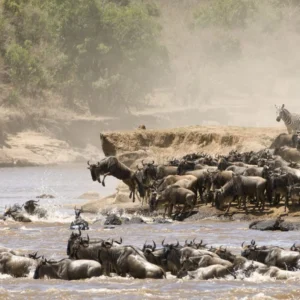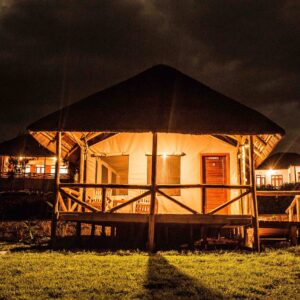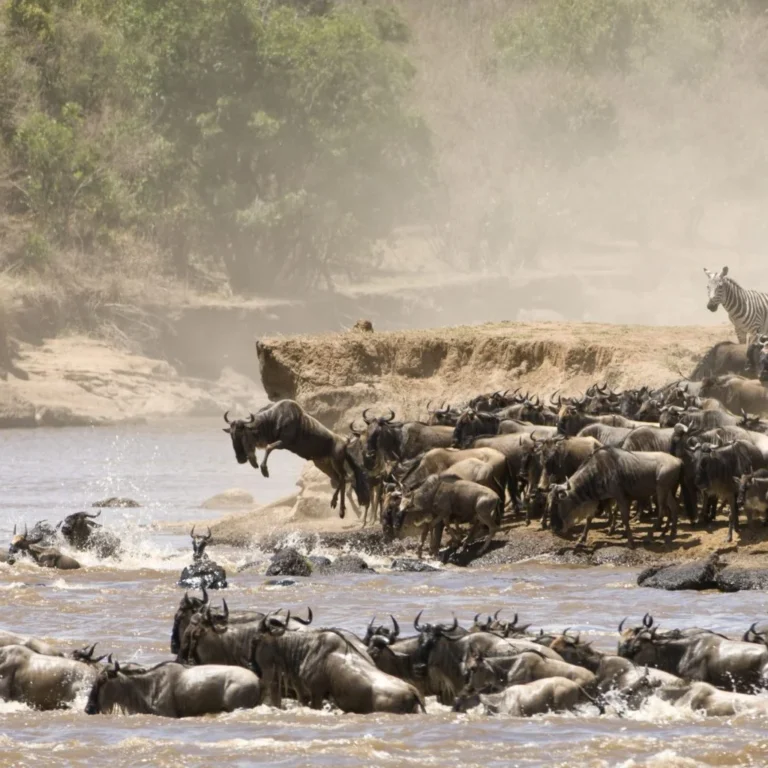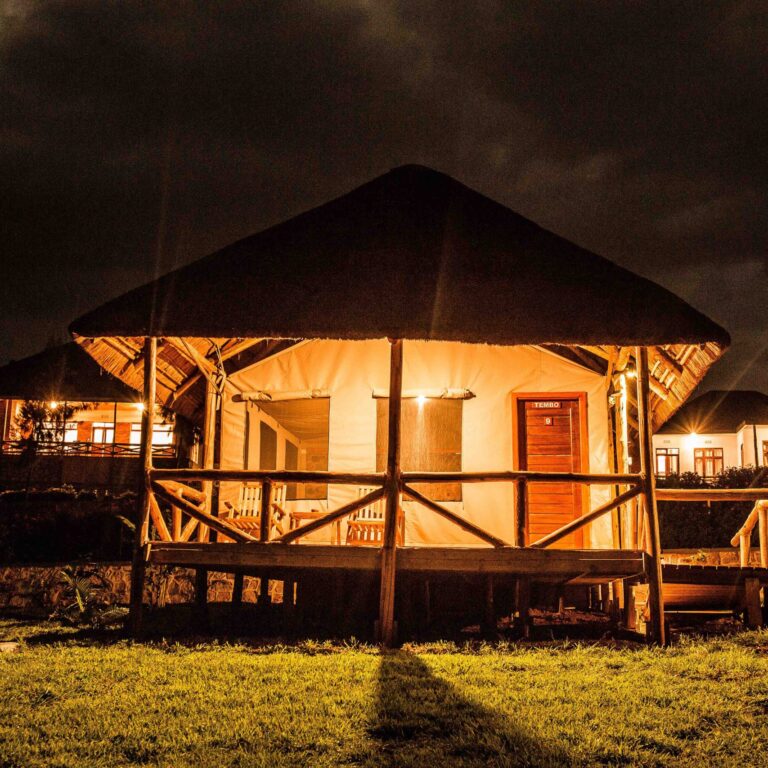Mount Kilimanjaro. The very name resonates with adventure, mystery, and raw natural grandeur. Rising dramatically from the plains of northeastern Tanzania, this majestic peak, not merely a mountain; it’s a global icon, a natural wonder, and a profound symbol of Africa itself. Its fame extends far beyond the realm of mountaineers. Captivating the imagination of people worldwide. But what precisely makes Kilimanjaro so famous and special? The answer lies in a remarkable confluence of geographical superlatives, ecological diversity, cultural significance, and its unique accessibility.
Mount Kilimanjaro famous and special due to its status as the highest peak in Africa. It’s unique geological formation as a dormant volcano, and its diverse ecosystems offer a range of climates and landscapes within a single mountain. It’s also a popular destination for trekkers, as it’s considered the easiest of the Seven Summits to climb, requiring no specialized climbing equipment. Mount Kilimanjaro is a stratovolcano, also known as a composite volcano. This type of volcano is characterized by its steep, cone-shaped structure built up from layers of hardened lava, volcanic ash, and other volcanic debris. Kilimanjaro its composed of three volcanic cones. Kibo, Mawenzi, and Shira, with Kibo being the youngest and containing the highest peak, Uhuru Peak. While Mawenzi and Shira are extinct, Kibo is currently dormant, meaning it could potentially erupt again in the future.
1. Height and Prominence: Africa’s Undisputed Apex
Kilimanjaro stands as Africa’s undisputed highest peak, towering at 5,895 meters (19,341 feet) above sea level. This sheer height alone grants it immense fame, making it a bucket-list destination for anyone seeking to stand atop the highest point on an entire continent. Its dominance over the surrounding landscape, breathtaking; rather than being part of a larger mountain range. Kilimanjaro erupts in splendid isolation, making its prominence visually stunning and instantly recognizable. From hundreds of kilometers away, its snow-capped summit can be seen, a stark contrast to the equatorial plains below. Cementing its status as an unmistakable natural landmark.
Mount Kilimanjaro’s three peaks were formed after volcanic eruptions millions of years ago. One volcanic cone, Shira, its now extinct and eroded. While the other two, Mawenzi and Kibo, melted together after subsequent eruptions. Kibo is now the highest with its famous Uhuru peak at almost 6000m above sea level.
2. Diverse Ecosystems: A World in Miniature
One of Kilimanjaro’s most extraordinary features, its dramatic transition through five distinct ecological zones as you ascend from base to summit. This allows climbers to experience a “world in miniature,” traversing climates and landscapes usually found across continents, all within a matter of days. Cultivation Zone. The fertile lower slopes, home to farms and villages. Rainforest. Lush, humid, and teeming with unique flora and fauna, often shrouded in mist. Heath and Moorland. A transition zone with giant heathers and wildflowers, gradually becoming more barren. Alpine Desert. A stark, semi-arid landscape with volcanic rock, dust, and sparse vegetation. Arctic Summit. The barren, glaciated volcanic crater, a world of ice and rock. This incredible biodiversity and rapid ecological shift make the climb not just a physical journey, but an educational and sensory exploration of distinct natural environments.
3. Accessibility for Trekkers: The Highest “Walk-Up” Mountain
Unlike many other major peaks of its stature, Kilimanjaro is not a technical climbing mountain. It doesn’t require ropes, specialized mountaineering skills. Or extensive prior climbing experience. Instead, it is famously a “walk-up” mountain, meaning that with proper physical fitness, mental fortitude, and, crucially, sufficient time for acclimatization, it is achievable for a wide range of trekkers from all walks of life. This accessibility, combined with its iconic status. Makes it a unique draw for adventurers seeking the thrill of a high-altitude summit without the formidable technical barriers of other global giants.
Located in northeastern Tanzania, Mount Kilimanjaro is the highest point in Africa. Though it lies in the tropics, its peak, covered with ice and snow year-round. Mount Kilimanjaro made up of three inactive volcanoes. Kibo in the center, Mawensi to the east, and Shira to the west.
4. Cultural Significance: A Mountain of Meaning
For the local Chagga people, who have lived on Kilimanjaro’s fertile lower slopes for centuries. The mountain its far more than just a landmark; it’s an integral part of their cultural identity and spirituality. It features prominently in their folklore, myths, and daily life, revered as a sacred place providing sustenance and shelter. The interaction with the local Tanzanian guides, porters, and cooks on your climbing team also offers a profound cultural exchange. Providing insights into their resilience, humor, and deep connection to the land. This human element adds a rich layer of meaning to the climb.
For centuries, Kilimanjaro has been held sacred by the Chagga people, who inhabit the fertile slopes surrounding the mountain. Known as “Kilema Kyaro” in the Chagga language, Kilimanjaro is believed to be the dwelling place of Ngai, the Supreme Being, and is revered as a source of life and fertility. The Chagga People live in Kilimanjaro National Park at the foothills of the mountain. They have a very unique lifestyle that intrigues many people visiting Tanzania. They still live their traditional lifestyle but have incorporated modern living, including food and dress.
5. UNESCO World Heritage Site: A Protected Treasure
In recognition of its outstanding universal value, Mount Kilimanjaro National Park was designated a UNESCO World Heritage Site in 1987. This designation acknowledges its exceptional natural beauty, its significant ongoing geological processes, and its ecological importance as a habitat for threatened species. UNESCO status provides international protection and highlights the mountain’s global significance as a natural wonder, further solidifying its fame and ensuring its preservation for future generations. The main reason why climbing Kilimanjaro is so expensive, is because the government charges very high park fees, other various factors are gear, guides, travel and logistics expenses.
Most linguists and etymologists, who study the roots of local words, agree that “Kilimanjaro” means “Mountain of Whiteness,” or “Shining Mountain.” The name is generally understood to be a combination of two words from different tribal languages (“Kilima” or mountain from Swahili and “Njaro” or shining/whiteness from the Chagga tribes).
6. Glacier and Climate Change: A Visible Alarming Transformation
One of the most poignant aspects of Kilimanjaro’s special status is its role as a dramatic, visible indicator of climate change. For millennia, its summit has been capped by magnificent glaciers, an almost surreal sight so close to the equator. However, these glaciers are rapidly shrinking. Scientific studies and visual evidence show a drastic reduction in ice cover over the past century, a direct consequence of global warming. Climbing Kilimanjaro offers a unique, firsthand perspective on this global phenomenon, making the experience not just an adventure but a stark educational moment about environmental fragility and the urgent need for climate action. The impending disappearance of these glaciers adds a sense of urgency for many to witness this natural wonder before it’s gone.
7. One of the Seven Summits: A Mountaineering Milestone
For ambitious mountaineers, Kilimanjaro, a cornerstone of the “Seven Summits” challenge, conquering the highest peak on each of the world’s seven continents. Its inclusion in this elite list automatically places it among the most coveted mountains globally. For many, it serves as an attainable entry point into high-altitude mountaineering. Offering a sense of achievement and prestige that rivals more technically demanding ascents. Further boosting its reputation in the adventure community. Mount Kilimanjaro famous for being the highest peak in Africa. The highest free-standing mountain in the world, and one of the Seven Summits. Its iconic snow-capped summit, diverse ecosystems, and accessibility for climbers of varying skill levels also contribute to its global fame
8. Tallest Free-Standing Mountain: A Singular Presence
Kilimanjaro’s unique geological formation as the world’s tallest free-standing mountain sets it apart. Unlike peaks that are part of extensive mountain ranges (like the Himalayas or the Andes), Kilimanjaro rises in splendid isolation from its base. This singular presence means that its entire majestic form can be admired from afar. Unhindered by other peaks, it creates an incredibly iconic and awe-inspiring silhouette against the African sky. This characteristic makes it visually distinctive and a subject of immense photographic appeal.
Mount Kilimanjaro, located in Tanzania, famous for being the highest peak in Africa and the world’s tallest free-standing mountain. It’s a dormant volcano with three volcanic cones. Kibo, Mawenzi, and Shira. Interestingly, despite its location near the equator, it boasts glaciers and snow at its summit. Mount Kilimanjaro, standing at 5,895 meters (19,341 feet), doesn’t have a “Death Zone” in the traditional sense used in high-altitude mountaineering, as its summit is well below 8,000 meters. However, this doesn’t mean the death risks are inexistence.
9. Iconic Views: Postcard-Perfect Panoramas
The views from Kilimanjaro are simply iconic. From the lower slopes offering glimpses of the vast African plains and nearby Mount Meru. The breathtaking panoramas above the clouds, and finally the unparalleled sunrise from the summit looking out over the curvature of the Earth. Every stage offers a visual masterpiece. The sight of the glaciers at dawn, the shadowed crater, and the endless horizon leaves an indelible mark. Making Kilimanjaro a photographer’s dream and a memory etched in the mind forever. It is believed to be a holy site and is thought to contain the spirits and energies reminiscent of their ancient ancestors. The mountain is a symbol of strength, courage, and beauty that has been carried through the generations. As such, Mount Kilimanjaro is treasured as an important part of Tanzanian culture.
10. Disappearing Glaciers: A Race Against Time
This point deserves emphasis beyond its link to climate change. The rapid retreat of Kilimanjaro’s glaciers adds a poignant and urgent layer to its fame. Scientists predict that these magnificent ice caps could disappear entirely within a few decades. This looming reality creates a “now or never” allure for many prospective climbers. Eager to witness this unique natural phenomenon before it becomes a memory. It transforms the climb into a pilgrimage to a vanishing wonder. Making each ascent special, not just for personal achievement, but for bearing witness to a monumental environmental shift.
What Celebrities Have Climbed Kilimanjaro?
Tanzania Voted the Best Safari Country of Africa
Tarangire National Park – Travel Guide, FAQs, Reviews, Map & More!
Top 15 Amazing Sights to See While Climbing Kilimanjaro
Why Does Mount Kilimanjaro Have Snow, Glaciers, and Ice Cap?






